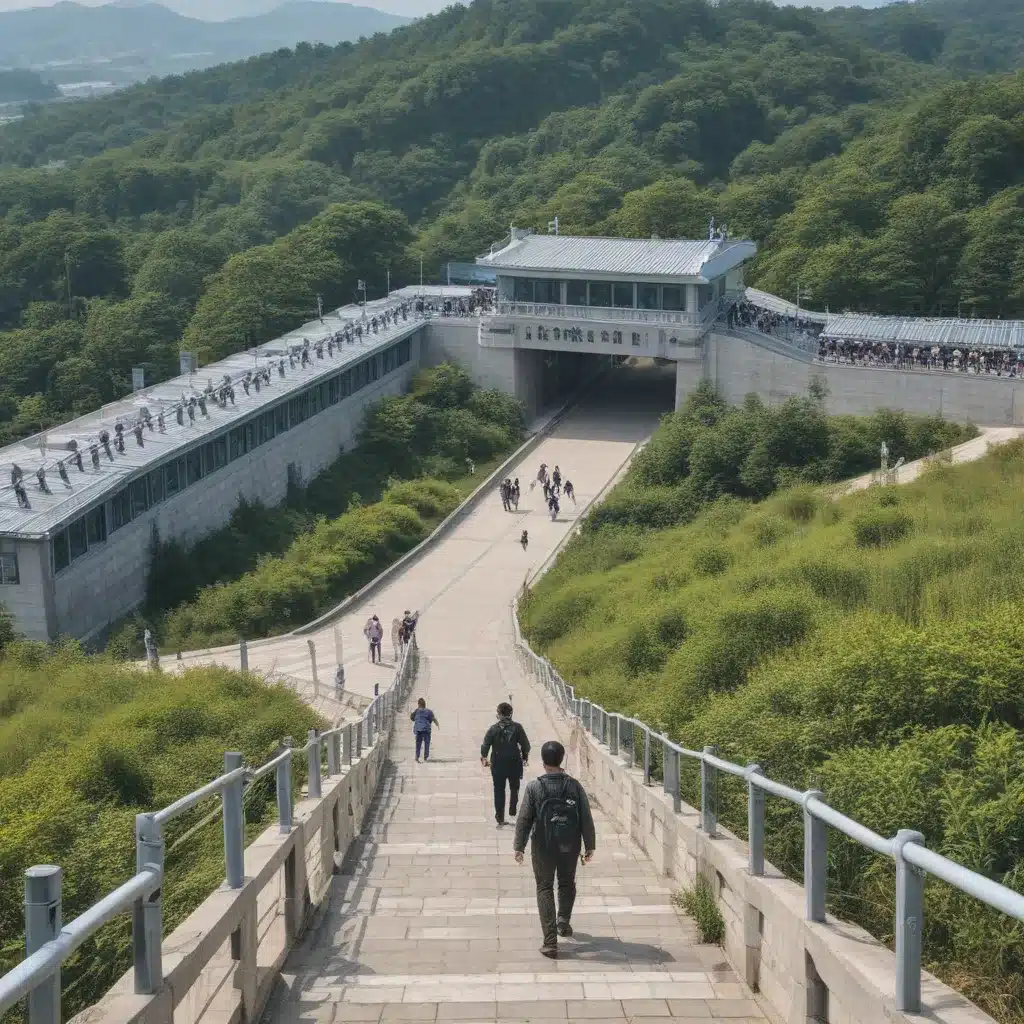
Discovering the Demilitarized Zone: An Unforgettable Adventure
As the concierge at Hotel Stay Inn Seoul, I’ve had the pleasure of arranging countless day trips to the Demilitarized Zone (DMZ) for our guests. And let me tell you, it’s an experience that never fails to leave a lasting impression. The DMZ, that famed strip of land separating North and South Korea, is a place like no other – a poignant remnant of a divided past, and a symbol of the unresolved tensions that still linger on the Korean Peninsula.
Now, I know what you might be thinking – a trip to the DMZ? Isn’t that, you know, dangerous? Well, let me assure you, the DMZ is a highly secure and meticulously managed tourist destination, and our hotel works with only the most reputable and experienced tour operators to ensure your safety and comfort every step of the way.
In fact, the DMZ has become a must-see for many visitors to Seoul, offering a unique glimpse into a world most people only ever see on the news. And trust me, nothing quite prepares you for the eerie silence, the heavy military presence, and the tangible sense of history that permeates the air as you step foot into this forbidden zone.
Exploring the DMZ: A Journey Through Time and Tension
So, what exactly can you expect from a day trip to the DMZ? Well, it all starts with a comfortable bus ride from our hotel, where you’ll be joined by a knowledgeable tour guide who will regale you with fascinating stories and insights about the DMZ’s storied past.
As you approach the heavily fortified border, the atmosphere starts to shift – the lush green landscapes give way to stark, barren terrain, and the din of the city slowly fades into an almost ominous silence. And that’s when you’ll catch your first glimpse of the iconic blue buildings that mark the Military Demarcation Line, the actual border between North and South Korea.
From there, the journey takes you to a series of must-see sites within the DMZ, each with its own unique history and significance. You might visit the Joint Security Area, where the famous “truce village” of Panmunjom is located, and where both North and South Korean soldiers stand guard just meters away from one another. Or you might explore the Tunnel of Aggression, a massive underground passage discovered in the 1970s, which was allegedly built by North Korea as a means of invading the South.
And let’s not forget the Dora Observatory, perched atop a strategically important hill, which offers breathtaking views of the North Korean countryside – a surreal and slightly unsettling experience, as you peer through high-powered binoculars at the hermit kingdom just across the border.
Grappling with the DMZ’s Complex History
As you move from one DMZ site to the next, the weight of the place starts to sink in. This is a land that has borne witness to some of the 20th century’s most dramatic and harrowing events – a place where the scars of war and division still linger, even decades after the Korean War’s end.
It’s a humbling and thought-provoking experience, to say the least. And as I guide our guests through the DMZ, I’m always struck by the range of emotions that surface – from awe and curiosity, to a deep sense of sorrow and uncertainty about the future.
You see, the DMZ isn’t just a physical place; it’s a symbol of the unresolved tensions that have defined the Korean Peninsula for generations. And as you wander through its quiet, forbidding landscapes, you can’t help but ponder the what-ifs and the might-have-beens – the missed opportunities for reconciliation, the lingering mistrust and animosity between North and South.
But amidst all the heaviness, there are also glimmers of hope. The DMZ, for all its military might and political significance, has also become a sanctuary for wildlife, with rare and endangered species thriving in the relative safety of the heavily guarded area. And there are ongoing efforts, both diplomatic and grassroots, to transform the DMZ into a symbol of peace, rather than division.
The DMZ Through the Eyes of a Local
As a Seoul native, I’ve had a front-row seat to the DMZ’s evolution over the years. I remember as a child, hearing the distant rumblings of North Korean artillery, and feeling a sense of unease and uncertainty about the future. But I’ve also seen how the DMZ has become a source of fascination and intrigue for people from all over the world – a place that, despite its dark history, has the power to captivate and inspire.
And that’s why I take such pride in sharing the DMZ experience with our hotel guests. It’s not just about ticking another box on the travel itinerary; it’s about connecting with a piece of history that has shaped the very fabric of my country. It’s about grappling with the complex realities of geopolitics, while also marveling at the resilience and adaptability of the natural world.
So, if you’re staying with us at Hotel Stay Inn Seoul and are looking for an unforgettable day trip, I can’t recommend the DMZ enough. It’s a journey that will challenge your preconceptions, tug at your heartstrings, and leave you with a deeper understanding of the enduring divisions and aspirations that define the Korean Peninsula.
Just don’t forget to bring your camera – because trust me, the images you capture will be seared into your memory for years to come.

